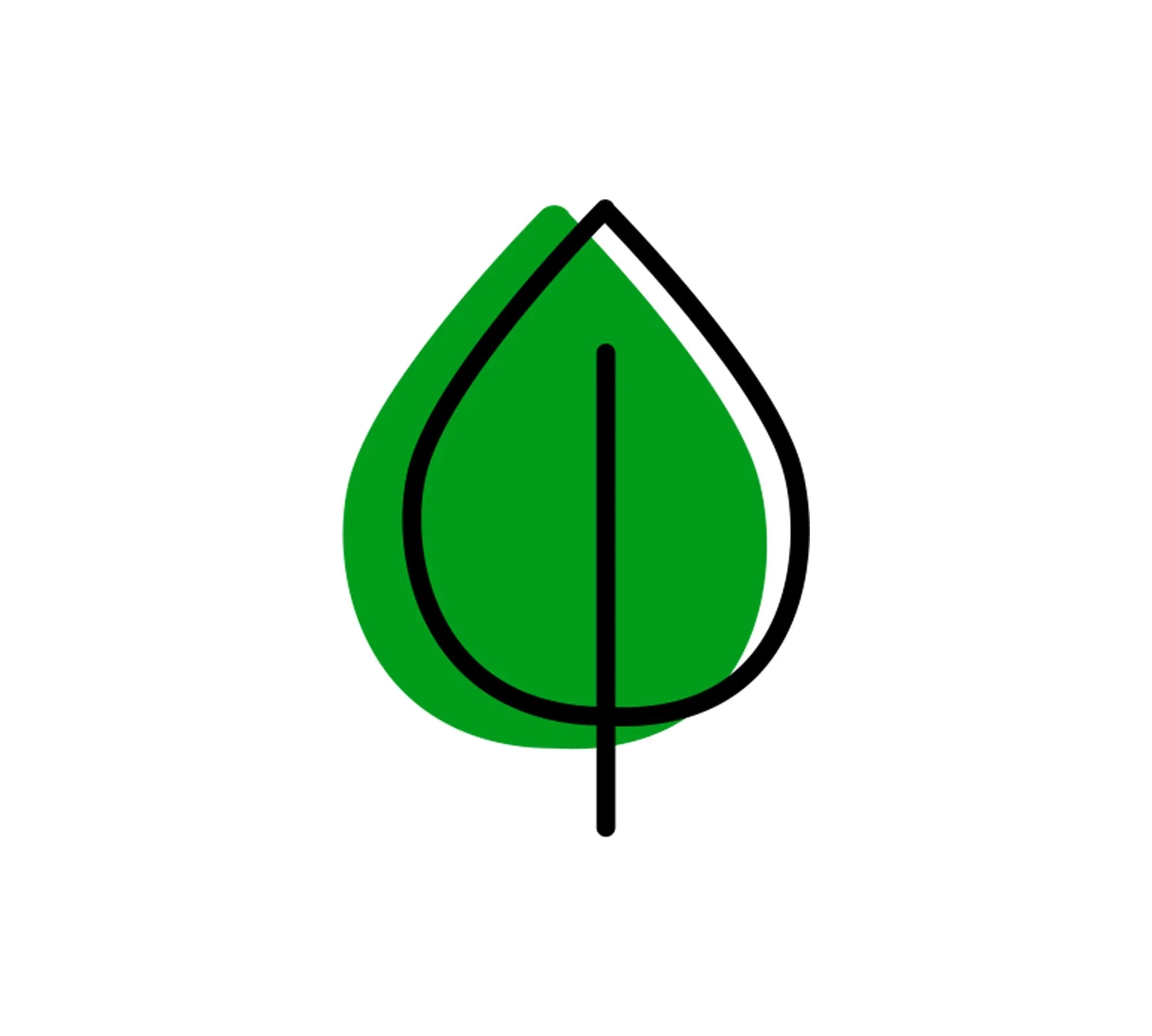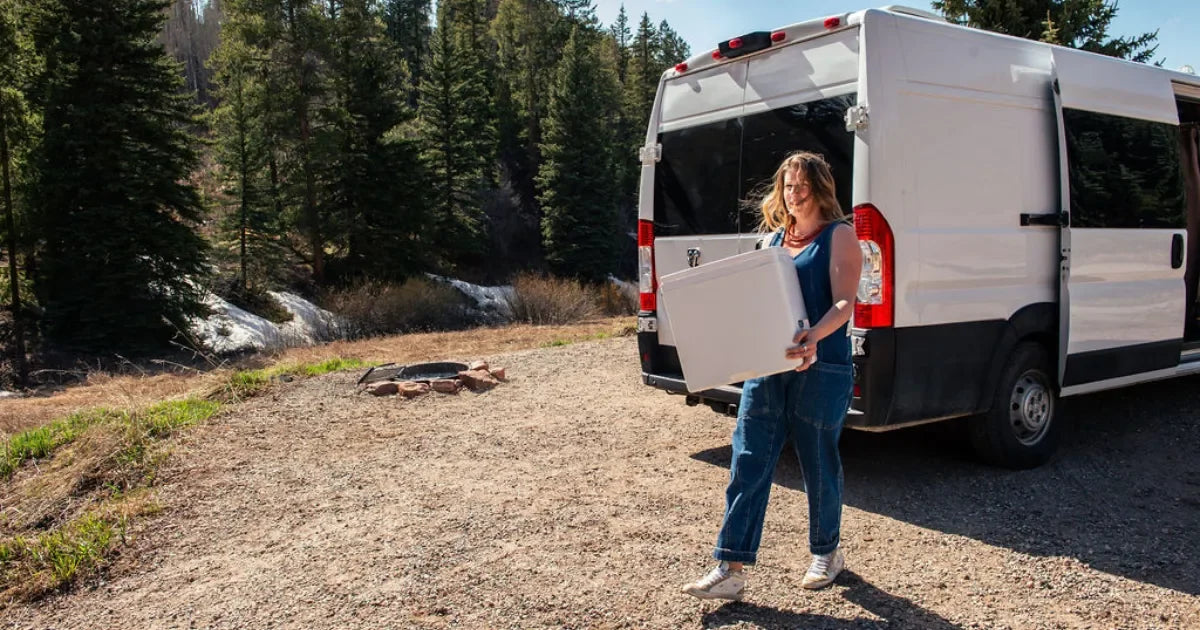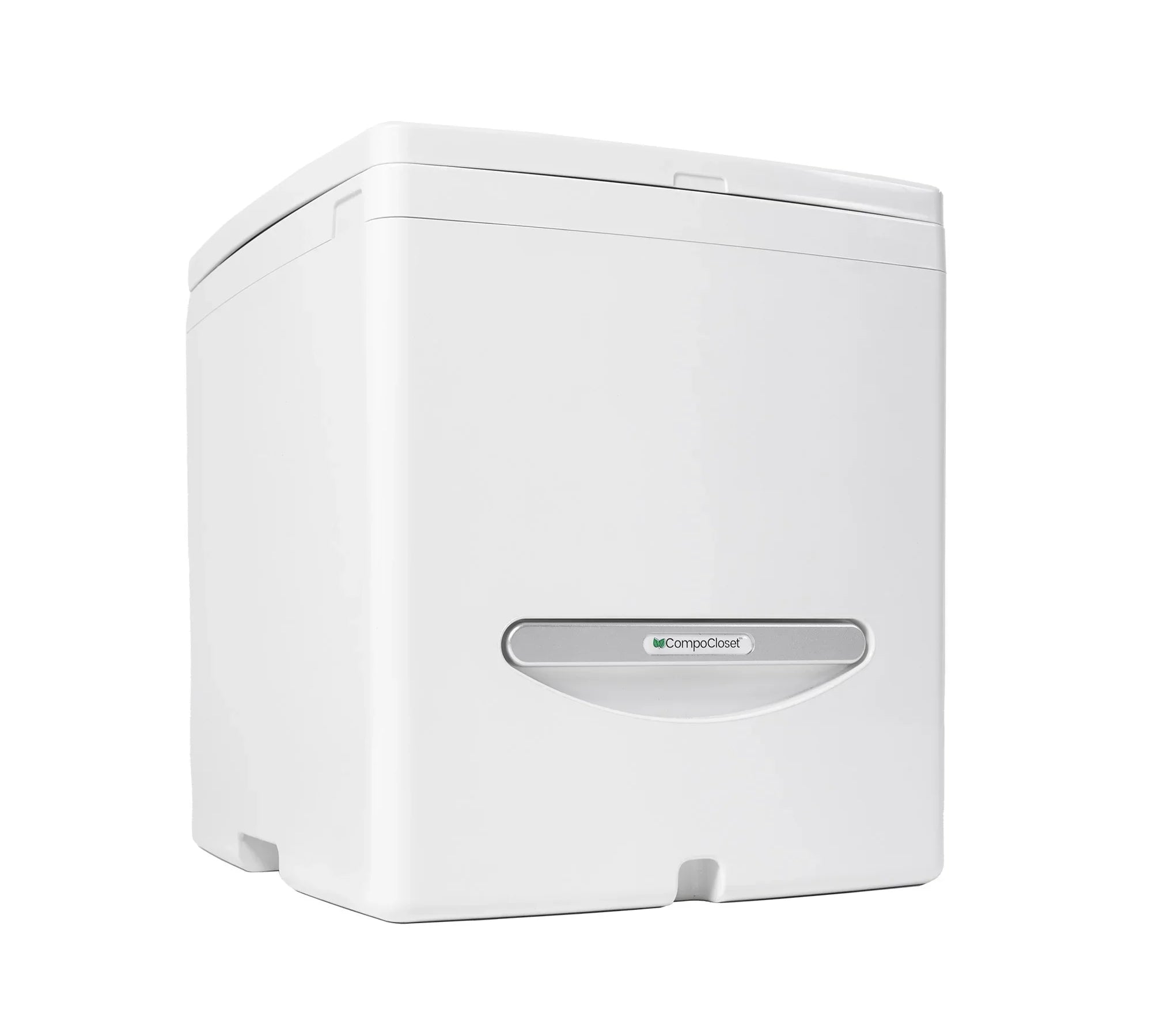Choosing the right composting toilet medium is key to ensuring your composting toilet operates smoothly and odor-free. In this guide, we'll focus on the best composting mediums for composting toilets like Cuddy (with an agitator) and Cuddy Lite (without an agitator).
Spoiler Alert: We think the best compost medium for Cuddy is Coco Coir. We’ve found and users agree that it's the best for moisture control, odor reduction, and ease of use with the agitator.
For Cuddy Lite, you can use any compost medium that is readily available. Cuddy Lite's simple design allows flexibility in using a variety of organic material for layering, depending on availability and personal preference. (We’ll dive deeper into layering methods shortly.)
Now, let’s start with the basics.
What is a Composting Medium?
A composting toilet medium is also known as a bulking agent, composting material, cover material, litter or substrate. In all of these cases, it is a substance added to a composting toilet to aid in the breakdown of waste and to prevent odors.
The compost medium can be any organic carbon rich material such as sawdust, animal litter, coconut coir, hemp, animal bedding, or sphagnum peat moss (although we don’t recommend peat moss because of it’s questionable sustainability). These help to create air pockets in the compost pile, which is necessary for aerobic decomposition.
What Does the Composting Medium Do?
The composting medium does several important jobs:
- Balances the carbon-to-nitrogen ratio in your waste.
- Absorbs excess liquid to keep the solids at the right moisture level.
- Traps air pockets, which are essential for aerobic decomposition (preventing bad smells).
- Covers the waste to reduce odor and improve aesthetics.
All of these things add up to making your toilet smell less and just make it a happier place for both people and those good bacteria.
Composting Toilet Cover Material Options
Here’s a quick reference guide to the different types of compost medium:
| Medium | Recommended Placement | Preparation | Advantages | Disadvantages |
|---|---|---|---|---|
| Coco Coir | Cuddy (with agitator) | Rehydrate with water, fluff. Watch Video | Compact storage, excellent absorbency, odor control, sustainable | Requires rehydration, slightly more expensive |
| Hemp | Cuddy Lite (without agitator) | May require breaking up for finer consistency | Biodegradable, eco-friendly, fast breakdown | Less absorbent, more material required |
| Sawdust | Cuddy Lite (without agitator) | Ready to use, no prep needed | Easily available, inexpensive, effective odor control | Messy to handle, can scatter easily |
| Compressed Wood Pellets | Cuddy Lite (without agitator) | Hydrate before use, fluff | Compact, great for limited storage space | Requires hydration, less effective at odor control |
| Peat Moss | Not recommended | Ready to use, no prep needed | Moisture control | Unsustainable, environmental concerns |
| Sugarcane Bagasse | Cuddy Lite (where available) | Use as is or break down into finer texture | Sustainable, eco-friendly in areas where available | Not widely available |
The most common composting toilet cover materials you can use are:
Coco Coir

Coco coir is natural coconut fiber extracted from the husk of a ripe coconut. It is brown in color and should not be confused with white coir made from unripe coconut. Make sure to look for coco coir manufactured using freshwater over salt water, which can cause high salt levels in your resulting compost. Coco Coir is a waste material from the 60 million tons of coconuts produced for food each year.
Advantages of coconut coir
One of the biggest benefits of coco coir is that it is typically sold in compacted bricks, making it easy to store extra material. This makes it a good choice where you have limited space such as RVs, narrowboats, sailboats, trailers or tiny houses.
To use a coco coir brick as a cover material it needs to be re-hydrated with water. You can do this in a reusable bucket or our favorite: a resealable plastic bag!
Coco coir can help control the amount of condensation in a composting toilet due to its ability to absorb excess moisture.
Another advantage of using coco coir is that it is dark brown in color. This helps disguise the contents and reduces the overall amount light in the solids container.
It's readily available online, but can also be found in pet stores (look for the terrarium section) or garden centers at reasonable prices.
Disadvantages of coconut coir
Unless you live near a coconut farm, you are unlikely to have access to cheap coconut coir. Its use for horticulture and pets can mean it is more expensive than other cover materials so may not be affordable for full-time use. However, for intermittent use or for small spaces this may be outweighed by the need or convenience of its compact form.
Coconuts are not grown everywhere in the world so while it is a waste product, there is an environmental impact to transporting it.
Hemp

Derived from the Cannabis sativa stem, Hemp Shiv (the inner part of the stem), is cut like short wood chips. It is a waste product from the hemp fabric and marijuana industries.
Advantages of Hemp
Hemp degrades faster than traditional wood shavings.
You should be able to find hemp bedding readily available to purchase at builders' merchants, hardware stores, garden centers, or pet stores. It can also be purchased in bulk for full time composting toilet users.
Disadvantages of hemp
The short strands of hemp are not as fine as sawdust or coco coir. This would mean that when adding hemp after using a layering toilet, a little more may be required to cover a deposit.
Hemp also isn't as absorbent as coco coir or sawdust so additional material may be required in a high-moisture environment.
Sawdust and wood shavings

A byproduct of sawmills and woodworking operations, "sawdust" comprises small particles of wood created from sawing. Wood shavings are slivers of wood from planing of wood or wood working.
With sawdust, a coarser sawdust is better than fine sawdust as fine sawdust doesn't trap as much air so can become waterlogged. Conversely, fine wood shavings used in pet bedding are better than coarse wood shavings. Coarse wood shavings will be slow to break down, won't absorb as much moisture or be as effective at blocking odors in your composting toilet.
It is important to use sawdust from un-treated timber as the chemicals and glue can be harmful to soil organisms.
Damp wood shavings are better than dry wood shavings at beginning the composting process as they become biologically active. If you are using a urine diverting toilet like Cuddy or Cuddy Lite, consider storing your shavings outside in the rain or spraying them with water before storing it near the toilet for use.
Benefits of sawdust and wood shavings
Wood is produced and used all over the world, making this one of the most common and available composting toilet mediums. It is likely there's a business nearby who has unwanted sawdust you may be able to get for free.
If you can't get a free supply, it is readily available at pet stores as pet bedding and can be bought in bulk.
The fine nature of sawdust makes it an excellent option for all-in one toilets due to its ability to block odor and being highly absorbent.
Cons of sawdust and wood shavings
Wood is a hardy material thanks to the lignin within it, so can be slightly slower to break down. ensuring you moisten your sawdust before using will give it time to become biologically active.
Sawdust is very light so it can be messy transferring it into the toilet after use. Keep a small dustpan and brush handy to clean up any spills.
Compressed wood pellets

Compressed wood pellets, used for small animal litter or heating, are actually compressed sawdust. Much like coco coir, they are easier to store because they take up less bulk and are an industrial byproduct. Unlike sawdust they won't be available for free, as they need to be manufactured and transported.
Pros of compressed wood pellets
You can readily buy compressed wood pellets from pet stores, which is excellent if you are on the road.
They're more compact than sawdust so are better suited to small spaces.
Cons of compressed wood pellets
In their raw form, compressed wood pellets won't form an effective odor barrier to cover deposits for both separating and non-separating toilets. Their round shapes mean they're prone to rolling off from what they're intended to cover.
While they absorb moisture effectively, they are likely too dry to use immediately for a cover material
We're still experimenting and are currently trying out partially hydrating them. If you have advice or experience using them as a cover material we'd love to chat!
Sphagnum Peat Moss
Sphagnum Peat Moss is formed from the partial decomposition of sphagnum moss. It is widely used in horticulture and gardening as a soil conditioner or a component in potting mixes.
However, functioning peatland ecosystems are some of the most carbon rich terrestrial ecosystems on earth, storing up to 30 times more carbon per hectare than a healthy tropical rainforest. Globally peatlands lock-up an estimated 550 billion tons of CO2e.
I tried to determine if it was sustainable while researching this article but couldn’t get a satisfactory answer. There is a lot of debate on the internet about the sustainability of Peat Moss with information from producers that it is renewable at our current rate of consumption. In the UK, compost is now peat free for consumer use by law and will be for commercial use in due course.
Because peat bogs are so valuable for the climate crisis, I’d prefer not to encourage people to consume more of a natural resource when there’s alternative waste streams we can use for the same purpose.
Sugarcane Bagasse
Sugarcane bagasse is the term to describe the crushed stems of sugarcane or sorghum. Dry and fibrous in appearance, it has been used successfully as a cover material for composting toilets. Importantly, it is the material of choice for Soil in Haiti on their toilet collection service EkoLakay.
This material is not readily available in the USA or Europe so I haven't had a chance to personally comment on its performance.
How Do I Know if My Compost Medium Contains Carbon?
You’ve heard us refer to “carbon-rich material” or simply “carbon material” when talking about compost medium. This is because to kickstart (and continue) the composting process, solid matter must contain carbon. That’s part of how composting toilets work.
So how do you know if your compost medium of choice has carbon? Simply ask: If I dried it, would it burn? All of the above materials would burn if put in a fire.
Sand and Soil don’t burn so don’t contain carbon. The microbes can’t feed on them and so they won’t help the composting process.
Medium You Shouldn't Use in Composting Toilets

Not everything is suitable for use as a compost medium. Here's a list of what you may have read about that we don't recommend using and why.
Kitty Litter
Either non-clumping or clumping cat litter are a no-go for composting toilets. They don't generally hide the smell over time or contain carbon to start the breakdown process. You end up with a dusty and dirty solids bin, meaning regular clean-up.
Hay and Straw
Hay and straw typically come in long lengths so aren't easy to put into the solids container and would interfere with an agitator. However, you could use them if the pieces were short enough since they do contain carbon. They would act similarly to hemp fiber but take longer to break down and are less absorbent. Hay can also have an unpleasant whiff if it gets too wet, so for that reason, it sits on our "would rather not recommend" list.
Side note: hay and straw are great as an insulator for compost piles!
Wood chips or pine bark
Larger pieces of wood don't degrade quickly and won't absorb as much liquid due to the low surface area. The larger pieces also mean a poor odor barrier or bio filter for smells.
Shredded paper
Some people have reported using shredded junk mail and paper as a cover material. As paper gets moist, it starts to form clumps. Over time, you'll end up with a paper mâché artwork you won't want to show off! In addition, the inks used in printing may not be biodegradable and could lead to unhealthy soil.
Dried coffee grounds
Dried coffee grounds are great for covering up toilet smells and, in small amounts, can be suitable for compost piles. However, coffee grounds are high in nitrogen so don't help to increase the carbon-nitrogen balance. They're also quite acidic so having larger quantities of coffee grounds in your compost can kill the beneficial microbes. The other issue is the amount of coffee grounds you have to discard daily. It's probably not enough to cover your poo with each visit unless you own a coffee shop
Sand, soil and terra preta
Sand, soil and terra preta are mainly minerals and don't contain enough carbon for the microbes to eat.
Synthetic anything
Synthetic pet bedding and other materials don't break down in compost piles or landfills and should not be used.
Ashes and lime
If you've read the Humanure Handbook, you will have read Joseph Jenkins saying that you must use plant cellulose over other materials. Ashes, lime, and sand can be toxic to plants or degrade the soil acidity you'll later need for plant growth. However, a little ash can be helpful if you are not separating liquid waste from your solid chamber. Wood ash from your campfire is very alkaline, which raises the PH and can help prevent the formation of ammonia (a common reason for a smelly toilet).
What is the Best Medium to Use in a Composting Toilet?
Which medium is best will depend on your style of toilet and your location. We prefer using by products of manufacturing and advocate sourcing it locally if you can.
Here's our recommendations for each type of toilet but we suggest choosing what makes sense to your situation.
Urine diverting toilets without an agitator
For urine diverting toilets without an agitator like Cuddy Lite you have less need to absorb excess moisture so any of the above mediums are suitable and whichever is most convenient for you will be ok.
Urine diverting toilets with an Agitator
If the soilds bin on your has an agitator, we have found that a more crumbly substrate like damp coco coir is our preference. It is effective at covering the solids and is easily mixed.
Coco coir is my personal preference. Since I have a Cuddy in my camper van, being able to store a spare brick easily without taking up much space is a big factor.
How Much Compost Medium Should You Use?
For smaller units, this will depend on whether you have an agitator or not.

For toilets without an agitator, like Cuddy Lite, start by adding a 3/4" layer of material to the empty bin. Then, after each poo break, add a sprinkle to hide the evidence and stop odors for the next visitor.
If your toilet has an agitator like Cuddy, you will start off with enough bulking agent already in the solids bin and turn it after each poo. This dries out your poop and breaks things down, meaning you don’t need to empty it as often or add more scoops of bulking material. The other great thing about using a unit with an agitator is that you also don’t need a separate container in the loo area for your bulking agent.
How much to add will depend on your manufacturer. For Cuddy, we recommend starting with the cover material 1" above the end of the agitator prongs.
Whether you have an agitator or not, if you’re struggling with moisture or condensation in your composting toilet due to diarrhea or other issues, simply adding more composting medium is recommended. The aim is to always maintain a moist but not wet consistency to avoid unpleasant odors.
Other Additions for Your Composting Toilet Medium
One of the things you can find with any decomposing matter is the occasional fly strike. We aren't talking big blue bottles, but the tiny and harmless earth flies and fungus gnats, also known as sciarid flies.
Diatomaceous earth is a great tool to help you combat that and maintain a happy composting toilet. You can get a small pot at a garden center or online.
Occasionally, use a fine sprinkle on top of your solid and bulking agent mix; it will deter flies and won't kill or harm earthworms and beneficial insects when it's later composting in the garden.
Toilet Paper in Composting Toilets
We typically don't recommend adding toilet paper in composting toilets with an agitator as it can interfere and wrap around the agitator. Instead, we suggest keeping it in a separate bin.
For toilets without an agitator, putting toilet paper in the solid bin is a personal choice. Toilet paper is very bulky so can quickly fill the solids bin leading to more emptying. It also does not break down quickly so should not be considered as a source of carbon in smaller systems.
For larger split chamber or moldering systems, toilet paper is fine to add as it will compress under the additional weight and break down over time.
Understanding the Layering Method in Composting Toilets (and why it matters)

Now that we’ve talked about all the different types of compost medium to use, you might be curious about layering methods.
The layering method is used in toilets without an agitator, like Cuddy Lite. You simply a composting medium to your solids bin each use. These layers are an important component that help control moisture, manage odors, and kickstart the composting process.
How to Layer Your Composting Toilet: A Step-by-Step Guide
Getting started with the layering method is easy. Here’s how:
-
Line the Solids Bin: Use an 8-9 US gallon bag to line the solids bin. This step is optional if you plan to empty directly onto a compost pile, but if you use a bag, choose a compostable bag to avoid contamination.
-
Start with a Base Layer: Add about an inch of composting medium to the bottom of the solids bin. This layer helps absorb moisture from the start and prepares the toilet for the layering process.
- Choose the Right Amount: Generally, around a cup of composting medium per use is sufficient. Adjust as needed based on your specific medium and usage.
Using and Maintaining a Composting Toilet with the Layering Method
Once set up, maintaining a composting toilet with the layering method is a breeze. After each poo, simply add a layer of composting medium. This covers your #2, control odors, and helps to start the compost process.
If you notice odors from your composting toilet, adding an extra layer of medium can help.
Benefits of the Layering Method
The layering method brings several key advantages
- Odor Control: By adding a layer of composting medium after each use, odors are kept to a minimum.
- Moisture Management: Composting mediums like coco coir and sawdust absorb moisture effectively, creating the ideal environment for composting.
- Ease of Use: The process is straightforward and doesn’t require mechanical components like agitators.
- Versatility: Works with various natural mediums, allowing you to choose what suits your needs best.
- Toilet Paper Compatibility: Toilet paper can be safely added to the solids bin, making the layering method even more convenient, although your solids bin will fill up quicker.
Our Final Thoughts on Selecting the Right Compost Medium
Although our top medium choice for any type of composting toilet is coconut coir, you might discover another carbon-rich material that works better for your environment. The best compost medium is the one that works for you, is sustainable, affordable, and easy to acquire.
If you have experience or suggestions about what compost medium you suggest, we’d love to hear from you!
Compost Medium FAQs
What materials should I avoid when selecting a compost medium?
Avoid non-compostable materials like plastic, synthetic fibers, or chemically treated mediums. Stick to natural materials like coco coir, sawdust, or hemp.
How often should I add substrate to my composting toilet?
For toilets without an agitator, add a new layer of composting medium after each poo. For toilets with an agitator, you’ll add fresh substrate initially, and then again only after emptying it to start the process all over again.
Can I use regular trash bags in the solids bin?
Yes, if there isn’t an agitator, you can use regular trash bags, but consider how you plan to dispose of the waste. If you are binning it, plastic bags are fine. However, if you want to compost the waste, compostable bags are a better choice. If your toilet has an agitator, you can’t use a bag in the solids bin.
How do I know when it’s time to empty my composting toilet?
You’ll need to empty your composting toilet when it becomes full. This is typically every 1–2 weeks for Cuddy Lite and 2-4 weeks for Cuddy, depending on usage. Check regularly to ensure the waste doesn’t exceed the bin's capacity, as this could impact odor control and the composting process.
Can I use dirt or sand in my composting toilet?
No, since dirt does not contain carbon, it won’t break down, so should not be used as a compost medium.
Which compost medium is best for moisture control?
Our recommendation is coco coir due to its highly absorbent ability.
-> Learn more about managing condensation in your composting toilet






